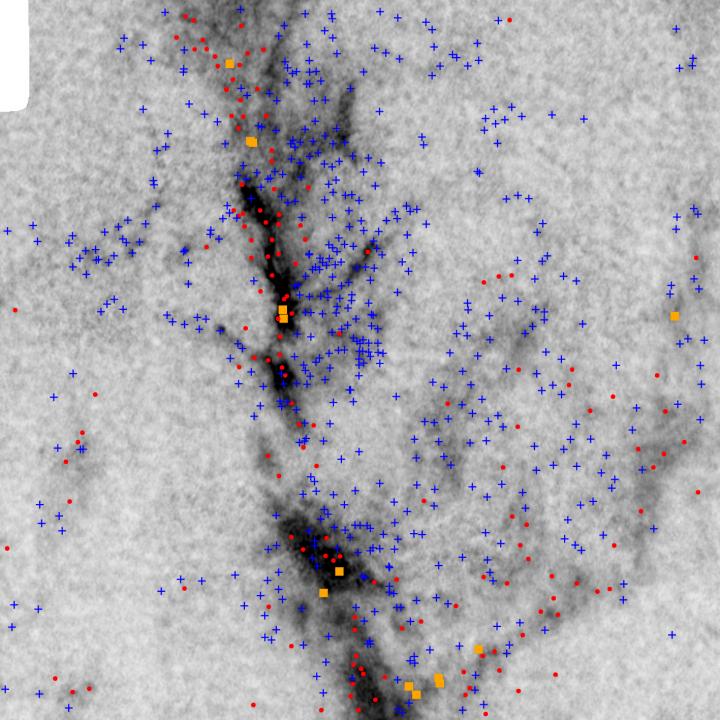
One of the most stunning regions in the sky for amateur astronomers to observe is the Orion Star-Forming region. From the famous M42 nebula in the sword to the Horsehead nebula, to cloud after cloud of glowing nebulosity and knots of star formation, that region of the sky is a complex of star formation that allows researchers to see all the short-lived stages.
As we’ve said before and will say again, we don’t fully understand star and planet formation, but we understand the broadest brush strokes. At its initial stages, a giant molecular cloud will collapse and fragment into dense cores that will, over time, continue collapsing into a spinning disk with a protostar in its center. These systems can draw in more or less material, growing depending on what they can pull in. Over what time this occurs, well, that had been a bit of a mystery, and it was suspected that perhaps large stars were able to continue growing by drawing material from around them and possibly from neighbors forming around them!
New observations taken with NAOJ’s Nobeyama 45-meter radio telescope find that the competition for resources occurs at the earliest stages of star formation, with dense cores already stealing materials to reach a size that reflects their final mass. The team looked at regions of star formation both at the earliest, dense cores of collapsing material stage and also at the newly formed stage of stars and found that the distribution of masses in these two kinds of systems are the same.
Prior to these results, it was thought that stars either formed through a competitive accretion model, where all stars start with roughly the same size dense core and over time grow more or less successfully; or that stars grow through a core-collapse model where different sized dense cores formed and led to different sized stars. These results indicate that, at least for the Orion Nebula, the core collapse model appears right. These observations are now being expanded to other star-forming regions to see if this is a universal result, or if, as so often happens, the universe is doing the same thing in multiple different ways.
What I love about this research is it is allowing us to really build a movie of star formation over time.
More Information
NAOJ press release
“The Core Mass Function in the Orion Nebula Cluster Region: What Determines the Final Stellar Masses?“, Hideaki Takemura et al., 2021 March 22, The Astrophysical Journal Letters




 Join the Crew!
Join the Crew!
 Escape Velocity Space News
Escape Velocity Space News
0 Comments